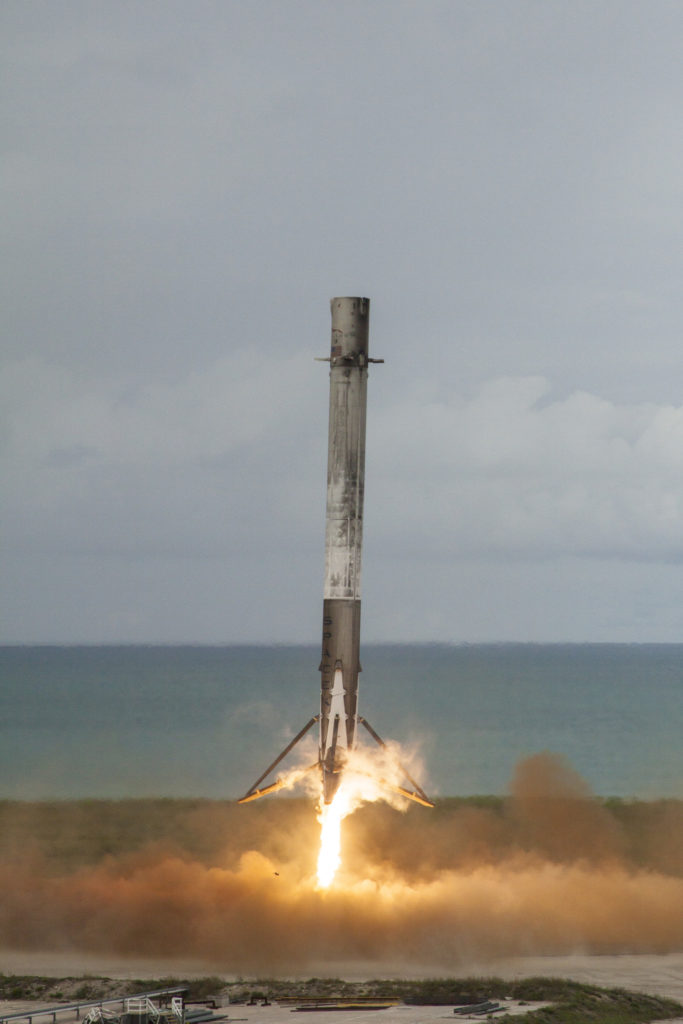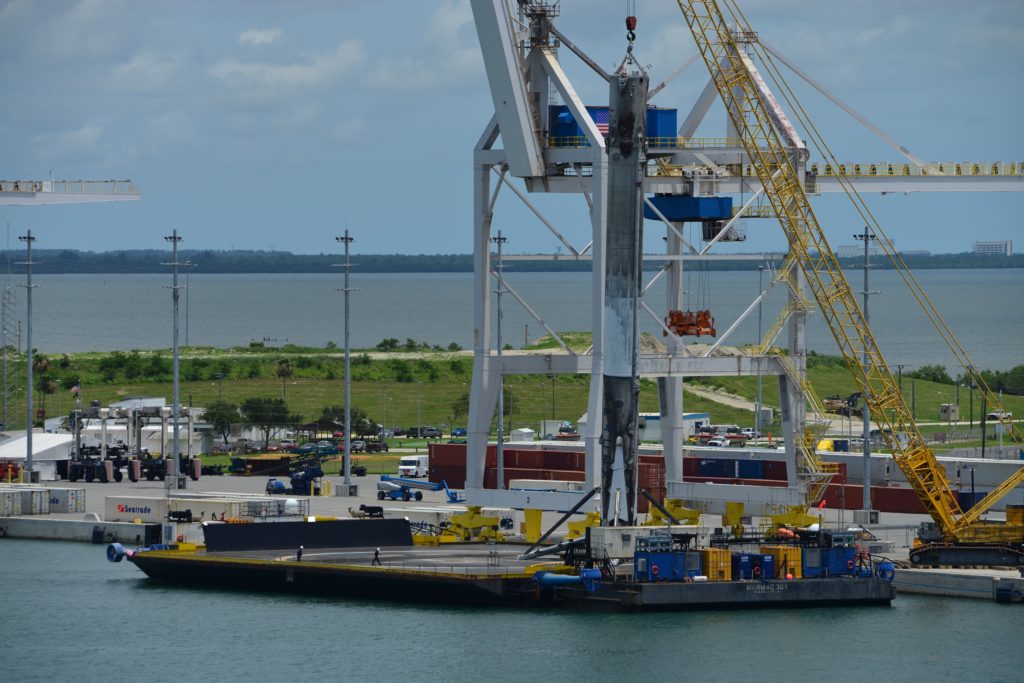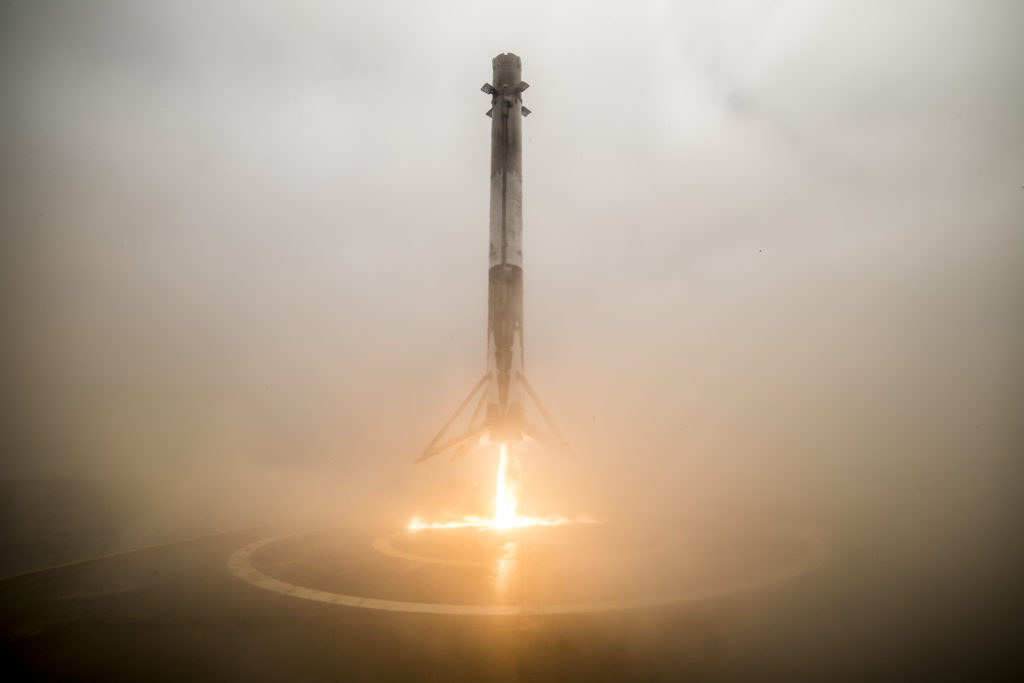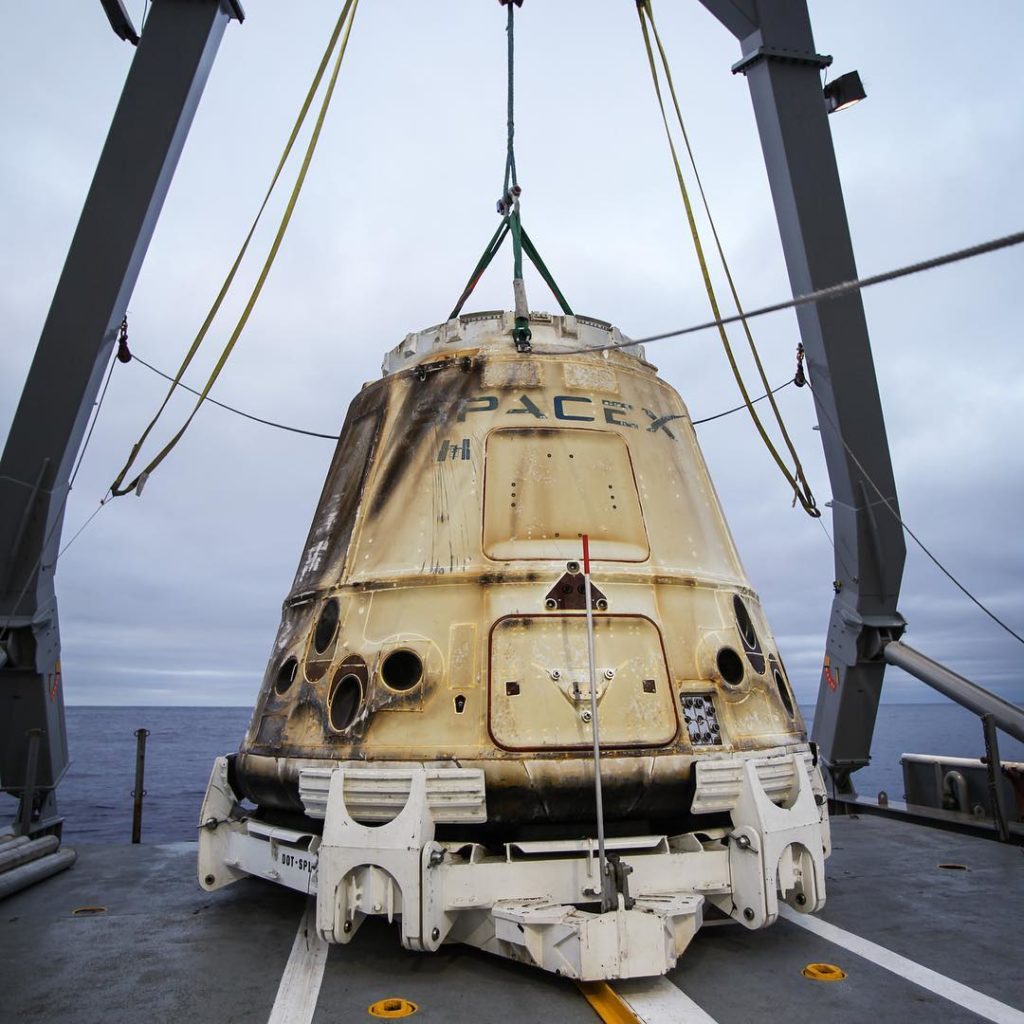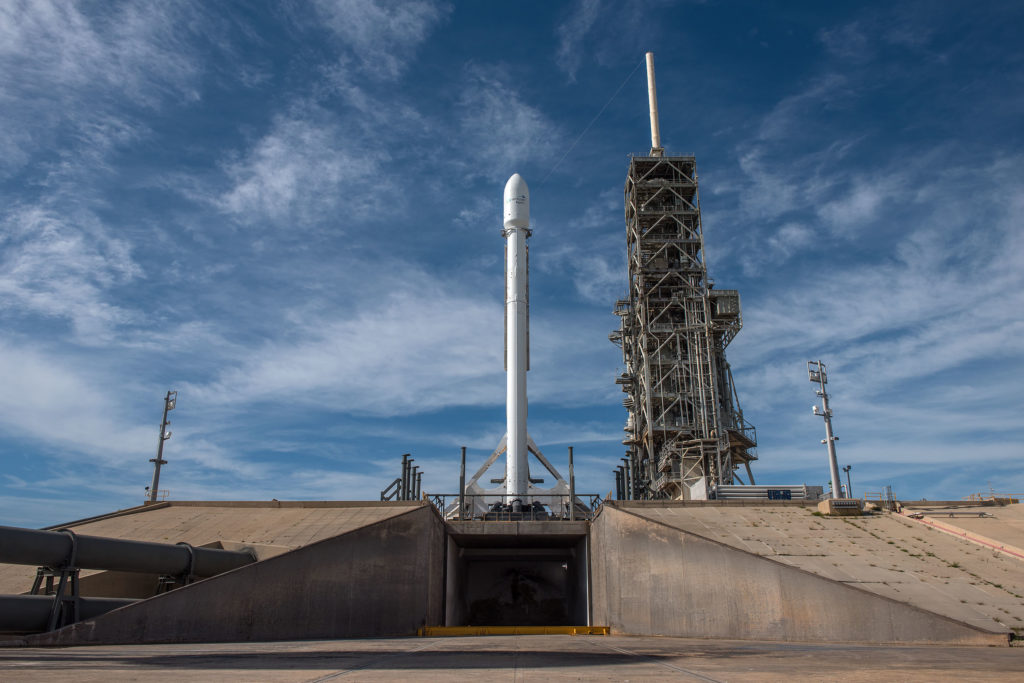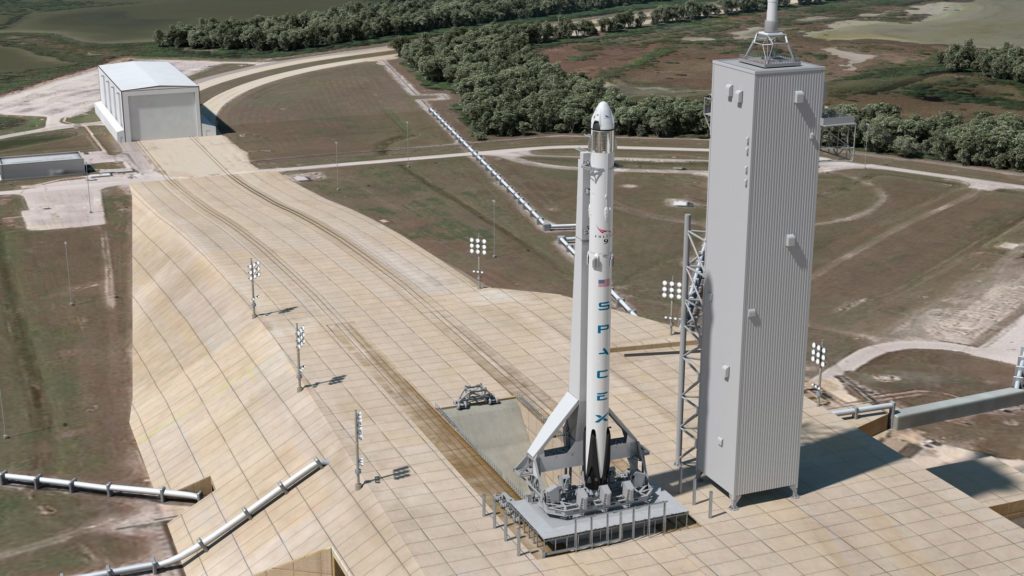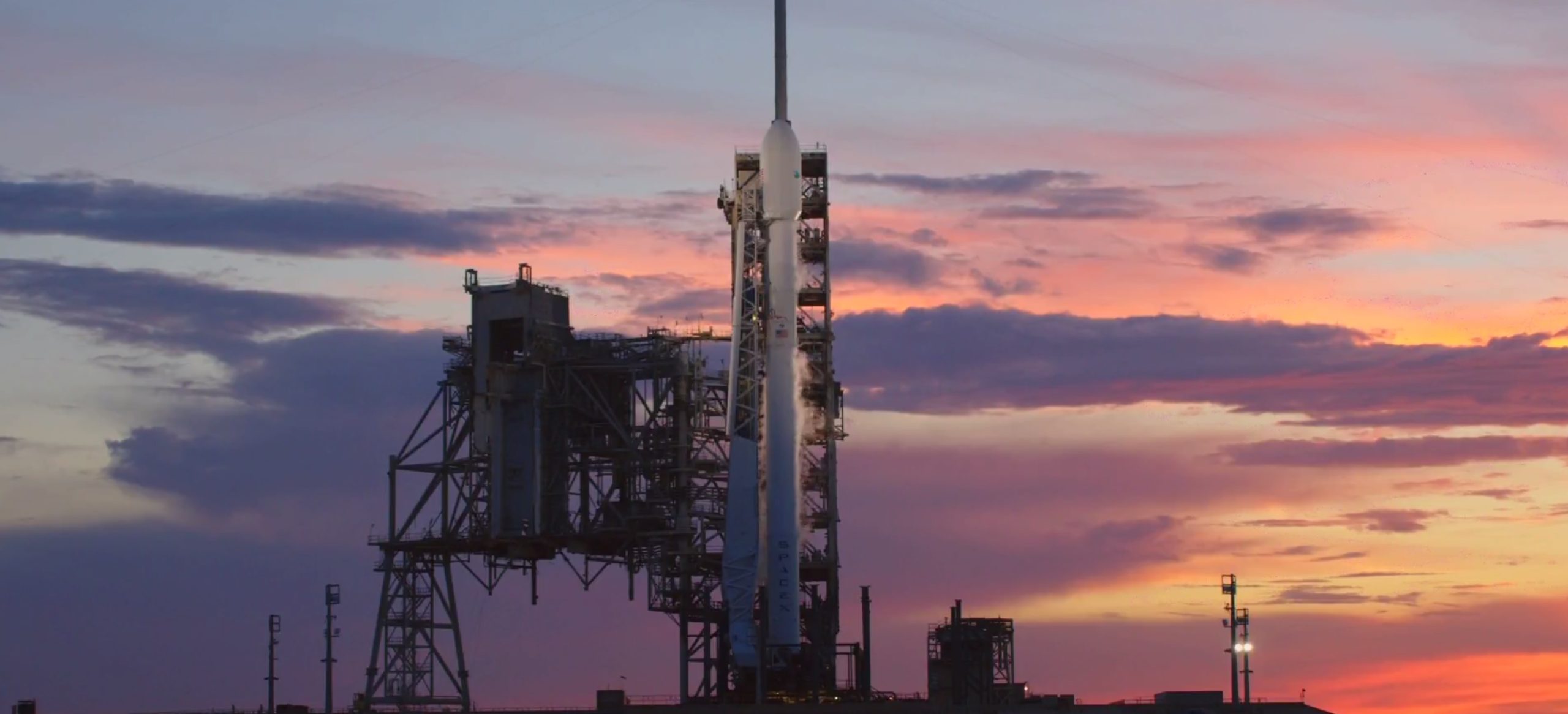
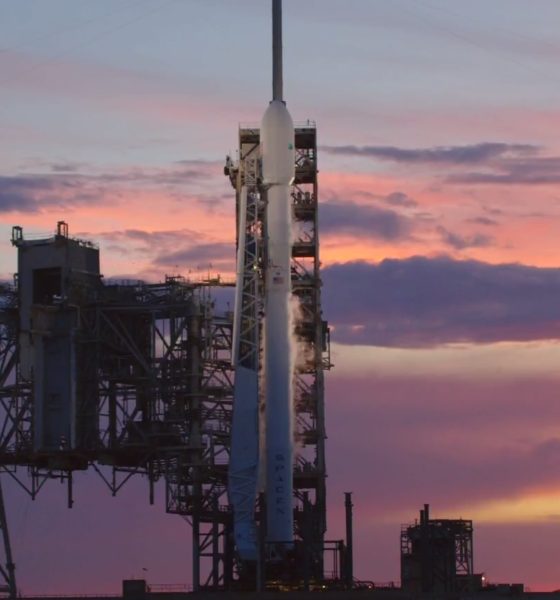
SpaceX
SpaceX prepares for last launch until August: Caution over cadence
After a second automatic T-10s launch abort Monday night, Elon Musk expressed a welcome prioritization of caution over an attempt to break cadence records. As such, the launch team at LC-39A are standing down an attempt today and instead conducting a full review of the Falcon 9 vehicle and ground systems, pushing the launch to either July 5th or 6th. As Musk transparently phrased it, there is only one chance to get a rocket launch right.
We're going to spend the 4th doing a full review of rocket & pad systems. Launch no earlier than 5th/6th. Only one chance to get it right …
— Elon Musk (@elonmusk) July 4, 2017
Following a truly unprecedented series of launches for the company, there was understandably a bit of annoyance from fans watching the coverage for a second time, as well as from journalists seeking to cover the launch. I think a tweet from former NASA Space Shuttle Program Manager Wayne Hale summed up the proper response most coherently, however, stating that “it’s tough to remain vigilant and do the right thing, extremely tough after a couple of launch scrubs and [with] range closure looming”. Remaining vigilant is precisely what SpaceX is doing by calling off another attempt on July 4th and choosing to instead carefully examine the systems involved to ensure that there is no real issue with pad or vehicle hardware.
For launch companies, there are an untold number of external and internal pressures urging executives to attempt launches, be those financial, political, or something as simple as employees wanting to get home for a holiday. However, past failures of launch vehicles, particularly the Space Shuttle, have demonstrated that constant vigilance is a necessity when dealing with rocketry. Wayne Hale was flight director for forty Shuttle launches. In fact, he became Program Manager the day of the Columbia disaster, which occurred at the beginning of February in 2003.
In this context, his statement is almost certainly intended as positive – albeit solemn – encouragement for the choice to take a more cautious route before attempting another launch. SpaceX itself has experienced two widely publicized failures of the Falcon 9, with the most recent of those having occurred less than ten months ago. After China suffered a complex failure during the second launch of their Long March 5 heavy lift vehicle last Sunday, Musk offered sympathy for those involved. Any failure in the launch industry often acts as a wake-up call for other companies and agencies involved, and undoubtedly becomes a reminder that one cannot become too comfortable or allow launch processes or vehicle manufacturing to become too routine when the stakes are as high as they can be.
Sorry to hear about China launch failure today. I know how painful that is to the people who designed & built it. https://t.co/iOkj6egF3O
— Elon Musk (@elonmusk) July 2, 2017
It goes without saying that SpaceX is sharply aware of the need to ensure reliability and safety as they march ever closer to the debut flight of Crew Dragon and its first crewed launches, likely to occur in early 2018. If the stakes for launching the payloads of commercial customers are already high, the price of failures that could lead to loss of life are unspeakable and ought to humble those fans and bystanders who may be losing patience while waiting for a third (admittedly enthralling) launch. Those eager to watch SpaceX’s live coverage must seek to remember that the launches we love to watch occur because paying customers have placed trust in SpaceX to deliver their payloads to orbit, be those payloads massive geostationary communications satellites or astronauts and cargo headed to the ISS. Rightfully so, the customer will always come first, and routine live coverage of rocket launches must always be treated as the luxury it is for the indefinite future.
SpaceX has successfully recovery and reused both Falcon 9 and Cargo Dragon in the last several weeks, and has also recovered three first stages from the three related launches that occurred in that same time period. (SpaceX)
Admittedly, a cornerstone of SpaceX’s mission as a company is making access to orbit reliable, affordable, and routine, but there will always be risk in rocket launches, just as there will always be risk when one boards a plane, drives a car, or simply walks down the sidewalk along a busy street. Minimizing and reducing the risk present in spaceflight will take a considerable amount of time and effort, and doing what is necessary to prevent failures from negatively impacting the customers that make SpaceX viable as a company is both a rational and ethical strategy.
Returning to current events, the Falcon 9 intended to launch Intelsat 35e went horizontal on July 4, and is likely now in the integration facility present at LC-39A, providing easier access to engineers as they comb over the vehicle to ensure its health. After an absolutely picturesque launch attempt Monday evening, weather is looking even better for a potential launch attempt on either Wednesday or Thursday evening.
If the vehicle and pad cooperate, Intelsat 35e will be a facing send off for the Eastern Range before it shuts down for the remainder of July to undergo routine maintenance. SpaceX currently does not have Vandenberg (West coast) missions scheduled until August, so July will likely see no launches from the company. There is still plenty to be done in lieu of launching customer payloads, however. LC-40, the pad damaged in the Amos-6 static fire incident last September, is currently preparing to be reactivated, with a recent interview of Gwynne Shotwell pointing to its initial availability sometime in August. Once it is reactivated, all single core Falcon launches will be transferred to LC-40, and LC-39A will begin undergoing structural modifications to accommodate both crewed missions in 2018 and Falcon Heavy, which could debut as early as Q4 of 2017.
- Intelsat 35e, July 2nd. (SpaceX)
- A render of Falcon 9 and Crew Dragon at LC-39A. (SpaceX)
The two most visible changes that will occur at LC-39A will be the installation of additional hold-down clamps and modifications to the Transporter Erector, as well as a Crew Access Arm, which will be attached to the large, vertical structure seen directly right of Falcon 9. Of note, it is very likely that at least two, if not all three of the first Falcon Heavy’s cores are already present at the Cape. After years of being deemed a paper rocket, Falcon Heavy is indeed very real and very close to being able to conduct its first launches.
A month of no launches from SpaceX will undoubtedly be less than thrilling, but the Air Force and Kennedy Space Center employees will get a much-deserved break from a busy launch manifest ahead of what will likely be an even busier final four months of the year. There is a lot to look forward to.

Investor's Corner
SpaceX IPO is coming, CEO Elon Musk confirms
However, it appears Musk is ready for SpaceX to go public, as Ars Technica Senior Space Editor Eric Berger wrote an op-ed that indicated he thought SpaceX would go public soon. Musk replied, basically confirming it.

Elon Musk confirmed through a post on X that a SpaceX initial public offering (IPO) is on the way after hinting at it several times earlier this year.
It also comes one day after Bloomberg reported that SpaceX was aiming for a valuation of $1.5 trillion, adding that it wanted to raise $30 billion.
Musk has been transparent for most of the year that he wanted to try to figure out a way to get Tesla shareholders to invest in SpaceX, giving them access to the stock.
He has also recognized the issues of having a public stock, like litigation exposure, quarterly reporting pressures, and other inconveniences.
However, it appears Musk is ready for SpaceX to go public, as Ars Technica Senior Space Editor Eric Berger wrote an op-ed that indicated he thought SpaceX would go public soon.
Musk replied, basically confirming it:
As usual, Eric is accurate
— Elon Musk (@elonmusk) December 10, 2025
Berger believes the IPO would help support the need for $30 billion or more in capital needed to fund AI integration projects, such as space-based data centers and lunar satellite factories. Musk confirmed recently that SpaceX “will be doing” data centers in orbit.
AI appears to be a “key part” of SpaceX getting to Musk, Berger also wrote. When writing about whether or not Optimus is a viable project and product for the company, he says that none of that matters. Musk thinks it is, and that’s all that matters.
It seems like Musk has certainly mulled something this big for a very long time, and the idea of taking SpaceX public is not just likely; it is necessary for the company to get to Mars.
The details of when SpaceX will finally hit that public status are not known. Many of the reports that came out over the past few days indicate it would happen in 2026, so sooner rather than later.
But there are a lot of things on Musk’s plate early next year, especially with Cybercab production, the potential launch of Unsupervised Full Self-Driving, and the Roadster unveiling, all planned for Q1.
News
SpaceX reportedly mulling IPO, eyeing largest of all time: report
“I do want to try to figure out some way for Tesla shareholders to participate in SpaceX. I’ve been giving a lot of thought to how to give people access to SpaceX stock,” Musk said.

SpaceX is reportedly mulling an initial public offering, eyeing what would be the largest valuation at the time of availability of all time, a new report from Bloomberg said on Tuesday.
It is one of many reports involving one of Elon Musk’s companies and a massive market move, as this is not the first time we have seen reports of an IPO by SpaceX. Musk himself has also dispelled other reports in the past of a similar nature, including an xAI funding round.
SpaceX and Musk have yet to comment on the report. In the past, untrue reports were promptly replied to by the CEO; this has not yet gained any response, which is a good sign in terms of credibility.
However, he said just a few days ago that stories of this nature are inaccurate:
“There has been a lot of press claiming SpaceX is raising money at $800B, which is not accurate. SpaceX has been cash flow positive for many years and does periodic stock buybacks twice a year to provide liquidity for employees and investors. Valuation increments are a function of progress with Starship and Starlink and securing global direct-to-cell spectrum that greatly increases our addressable market. And one other thing that is arguably most significant by far.”
There has been a lot of press claiming @SpaceX is raising money at $800B, which is not accurate.
SpaceX has been cash flow positive for many years and does periodic stock buybacks twice a year to provide liquidity for employees and investors.
Valuation increments are a…
— Elon Musk (@elonmusk) December 6, 2025
Musk has discussed a potential IPO for SpaceX in recent months, as the November 6 shareholder meeting, as he commented on the “downsides” of having a public company, like litigation exposure, quarterly reporting pressures, and other inconveniences.
Nevertheless, Musk has also said he wants there to be a way for Tesla shareholders to get in on the action. At the meeting in early November, he said:
“I do want to try to figure out some way for Tesla shareholders to participate in SpaceX. I’ve been giving a lot of thought to how to give people access to SpaceX stock.”
Additionally, he added:
“Maybe at some point., SpaceX should become a public company despite all the downsides of being public.”
Musk has been historically reluctant to take SpaceX public, at times stating it could become a barrier to colonizing Mars. That does not mean it will not happen.
Bloomberg’s report cites multiple unidentified sources who are familiar with the matter. They indicate to the publication that SpaceX wants to go public in mid-to-late 2026, and it wants to raise $30 billion at a valuation of around $1.5 trillion.
This is not the first time SpaceX has discussed an IPO; we reported on it nine years ago. We hope it is true, as the community has spoken for a long time about having access to SpaceX stock. Legendary investor Ron Baron is one of the lucky few to be a SpaceX investor, and said it, along with Tesla, is a “lifetime investment.”
Tesla bull Ron Baron reveals $100M SpaceX investment, sees 3-5x return on TSLA
The primary driver of SpaceX’s value is Starlink, the company’s satellite internet service. Starlink contributes 60-70 percent of SpaceX’s revenue, meaning it is the primary value engine. Launch services, like Falcon 9 contracts, and the development of Starship, also play supporting roles.
News
SpaceX reaches incredible milestone with Starlink program
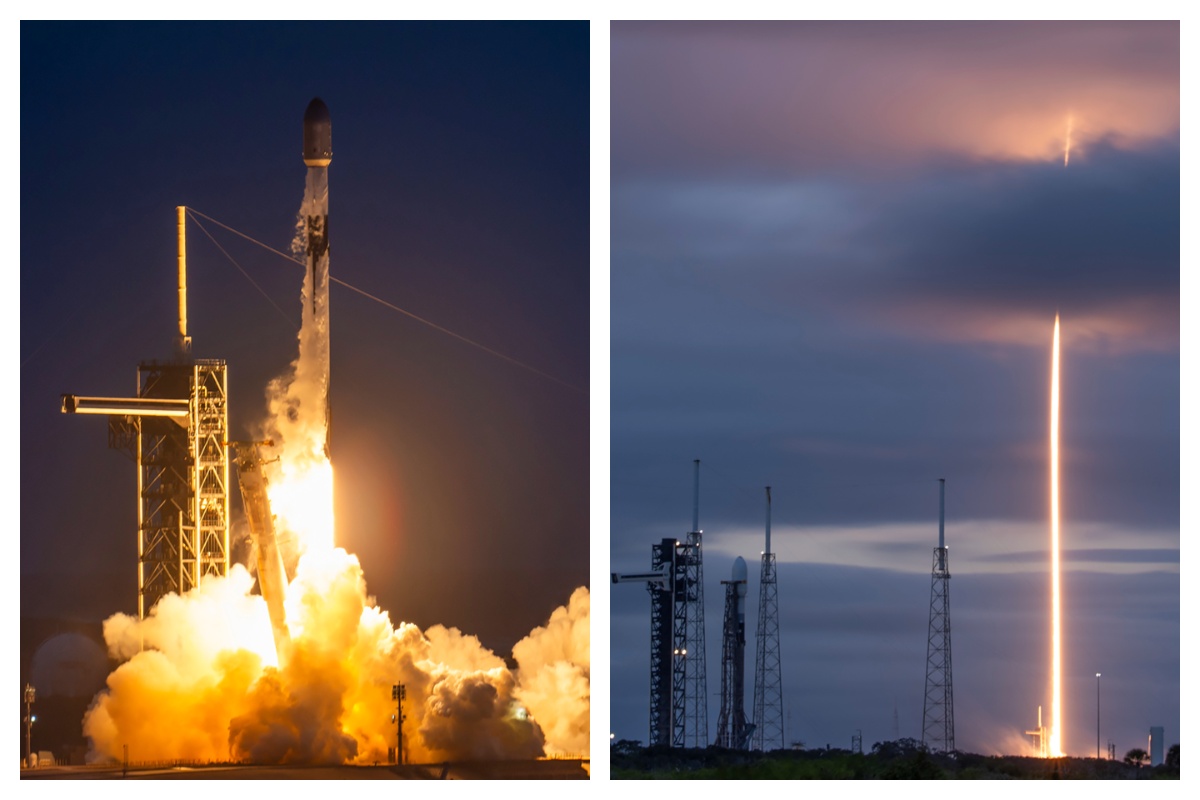
SpaceX reached an incredible milestone with its Starlink program with a launch last night, as the 3,000th satellite of the year was launched into low Earth orbit.
On Monday, SpaceX also achieved its 32nd flight with a single Falcon 9 rocket from NASA’s Kennedy Space Center.
The mission was Starlink 6-92, and it utilized the Falcon 9 B1067 for the 32nd time this year, the most-used Falcon booster. The flight delivered SpaceX’s 3000th Starlink satellite of the year, a massive achievement.
There were 29 Starlink satellites launched and deployed into LEO during this particular mission:
Falcon 9 launches 29 @Starlink satellites from Florida pic.twitter.com/utKrXjHzPN
— SpaceX (@SpaceX) December 9, 2025
SpaceX has a current goal of certifying its Falcon boosters for 40 missions apiece, according to Spaceflight Now.
The flight was the 350th orbital launch from the nearby SLC-40, and the 3,000 satellites that have been successfully launched this year continue to contribute to the company’s goal of having 12,000 satellites contributing to global internet coverage.
There are over five million users of Starlink, the latest data shows.
Following the launch and stage separation, the Falcon 9 booster completed its mission with a perfect landing on the ‘Just Read the Instructions’ droneship.
The mission was the 575th overall Falcon 9 launch, highlighting SpaceX’s operational tempo, which continues to be accelerated. The company averages two missions per week, and underscores CEO Elon Musk’s vision of a multi-planetary future, where reliable connectivity is crucial for remote work, education, and emergency response.
As Starlink expands and works toward that elusive and crucial 12,000 satellite goal, missions like 6-92 pave the way for innovations in telecommunications and enable more internet access to people across the globe.
With regulatory approvals in over 100 countries and millions of current subscribers, SpaceX continues to democratize space, proving that reusability is not just feasible, but it’s also revolutionary.
